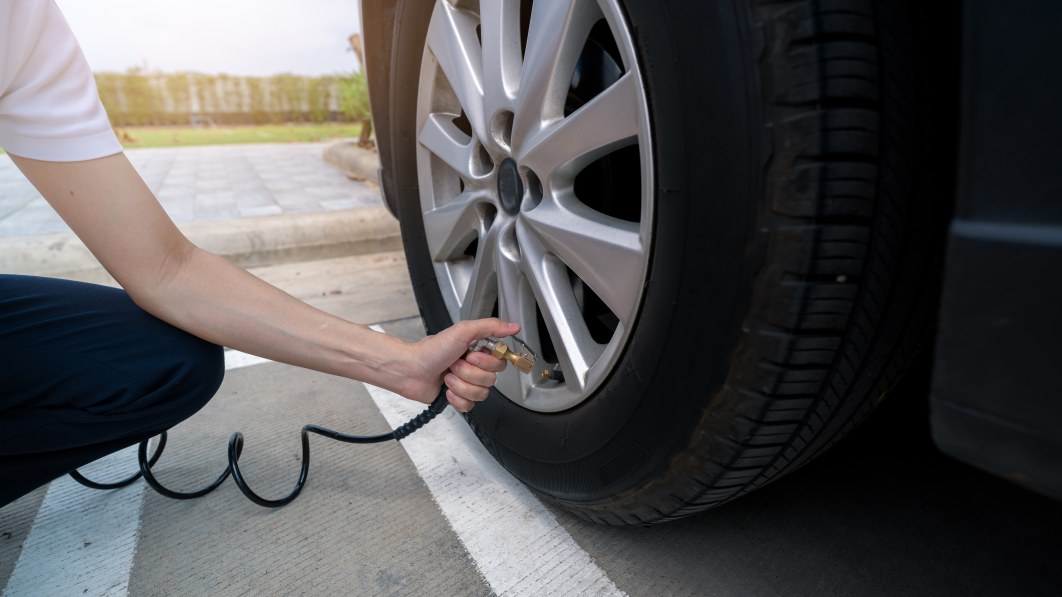Table of Contents
Tires are arguably the least interesting part of your car. They’re round, black, expensive to replace and generally disappear into the background of your driving experience if you’re just a commuter. Of course, all that goes out the window when something happens, and you’re relying on the grip they provide to stay safe. How your tires perform in those situations and how long they last are both directly related to their tire pressure recommendations. How your tires perform in those situations and how long they last are both directly related to their inflation pressure, measured in pounds per square inch, also known as PSI. So, what should your tire pressure be?
How do I know what PSI my tires need?
Everyone knows that tires should be full of air to function, but how much air you should have in your tires – in other words, tire pressure – depends on many factors. Lucky for all of us, car manufacturers are legally required by the National Highway Traffic Safety Administration (NHTSA) to put a placard somewhere easily visible in the car that tells you exactly what pressure to which you should inflate your tires. This is almost always in the driver’s side door jamb, but if you have an older car and this is missing, you can always look in your owner’s manual for tire pressure recommendations.
Many common cars recommend tire pressure to be in the 30-35 PSI range. For instance, one an example of the Toyota Tundra we checked, the recommended tire pressure stood at 30 PSI, while both the Toyota Camry and RAV4 had recommended pressures of 35 PSI. Light Truck tires (which may be abbreviated to LT) may have higher recommended pressure levels.
Something important to remember is that the pressures listed on that sticker or in your owner’s manual are what’s known as “cold inflation pressures.” This means that the tires themselves are as close to 68 degrees Fahrenheit (20 degrees Celsius) as possible. So, the best time to check your tire pressure is in the morning before driving your car anywhere or at least before driving for more than a few minutes.
As a rule of thumb, you should not inflate your tires to the pressure listed on the side of the tire itself. This is a maximum inflation pressure, and doing so will compromise your car’s handling, ride and tire wear. In the worst case scenario, the tire could explode and kill you.
How do you check tire pressure?
To check pressures, you’ll want a tire pressure gauge, ideally not one of the stick-type ones you see at auto parts stores or gas stations. Those will get you close in a pinch, but a dial-type pressure gauge is much more accurate and not that much bigger or more expensive. You’ll start by removing the little cap on your wheel’s valve stem (the little rubber dingus that’s poking out of your rim) and pushing the pressure gauge firmly against the brass valve. This will give you a gauge reading and you’ll know if your pressure is too low or too high.
How to adjust tire pressure?
If you need to adjust your pressures, and you’re like most people, you’ll go to a gas station to use their air pump. Most of these have a brass pressure indicator as part of the inflator. However, this is almost laughably inaccurate and should only be used to get you in the ballpark before you recheck with your own gauge that now permanently lives in your glove compartment, right?
An even better solution than going to the gas station would be to pick up a portable tire inflator. There are a bunch on the market and they’re relatively inexpensive, with most retailing for under $100. Some can also function as flashlights or charge other devices with their onboard rechargeable batteries.
How often should you check your tire pressure?
Finally, you should realistically check your tire pressure every month, but weekly would be better and save you time and money in the long run. If you’re like most motorists, though, that won’t happen so just do it as often as you remember to. If you don’t want to bother doing it yourself, many large chain tire shops will check your tire pressures and adjust them to the proper specs for free.


